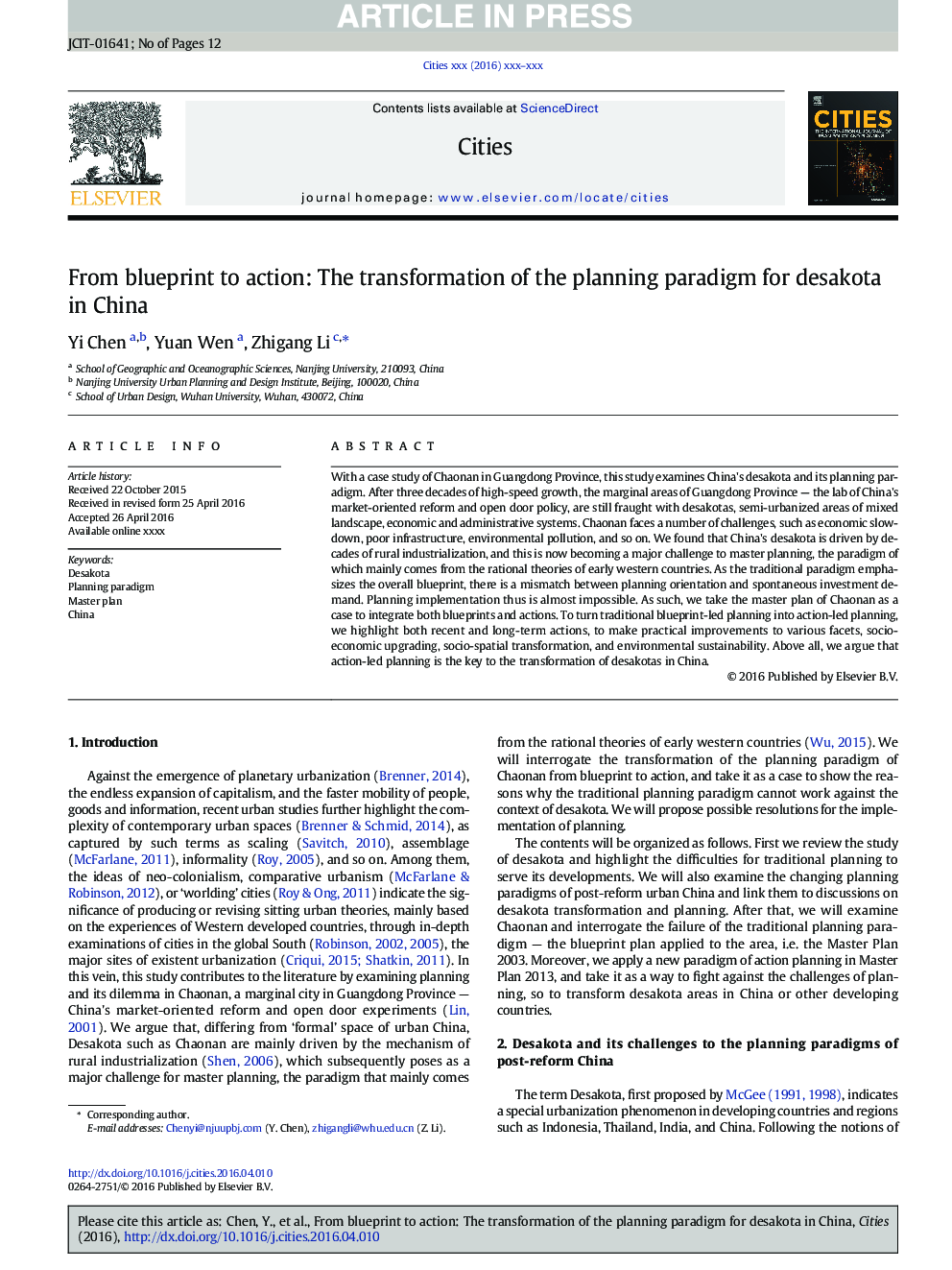| Article ID | Journal | Published Year | Pages | File Type |
|---|---|---|---|---|
| 7417824 | Cities | 2017 | 12 Pages |
Abstract
With a case study of Chaonan in Guangdong Province, this study examines China's desakota and its planning paradigm. After three decades of high-speed growth, the marginal areas of Guangdong Province - the lab of China's market-oriented reform and open door policy, are still fraught with desakotas, semi-urbanized areas of mixed landscape, economic and administrative systems. Chaonan faces a number of challenges, such as economic slowdown, poor infrastructure, environmental pollution, and so on. We found that China's desakota is driven by decades of rural industrialization, and this is now becoming a major challenge to master planning, the paradigm of which mainly comes from the rational theories of early western countries. As the traditional paradigm emphasizes the overall blueprint, there is a mismatch between planning orientation and spontaneous investment demand. Planning implementation thus is almost impossible. As such, we take the master plan of Chaonan as a case to integrate both blueprints and actions. To turn traditional blueprint-led planning into action-led planning, we highlight both recent and long-term actions, to make practical improvements to various facets, socio-economic upgrading, socio-spatial transformation, and environmental sustainability. Above all, we argue that action-led planning is the key to the transformation of desakotas in China.
Keywords
Related Topics
Social Sciences and Humanities
Business, Management and Accounting
Tourism, Leisure and Hospitality Management
Authors
Yi Chen, Yuan Wen, Zhigang Li,
